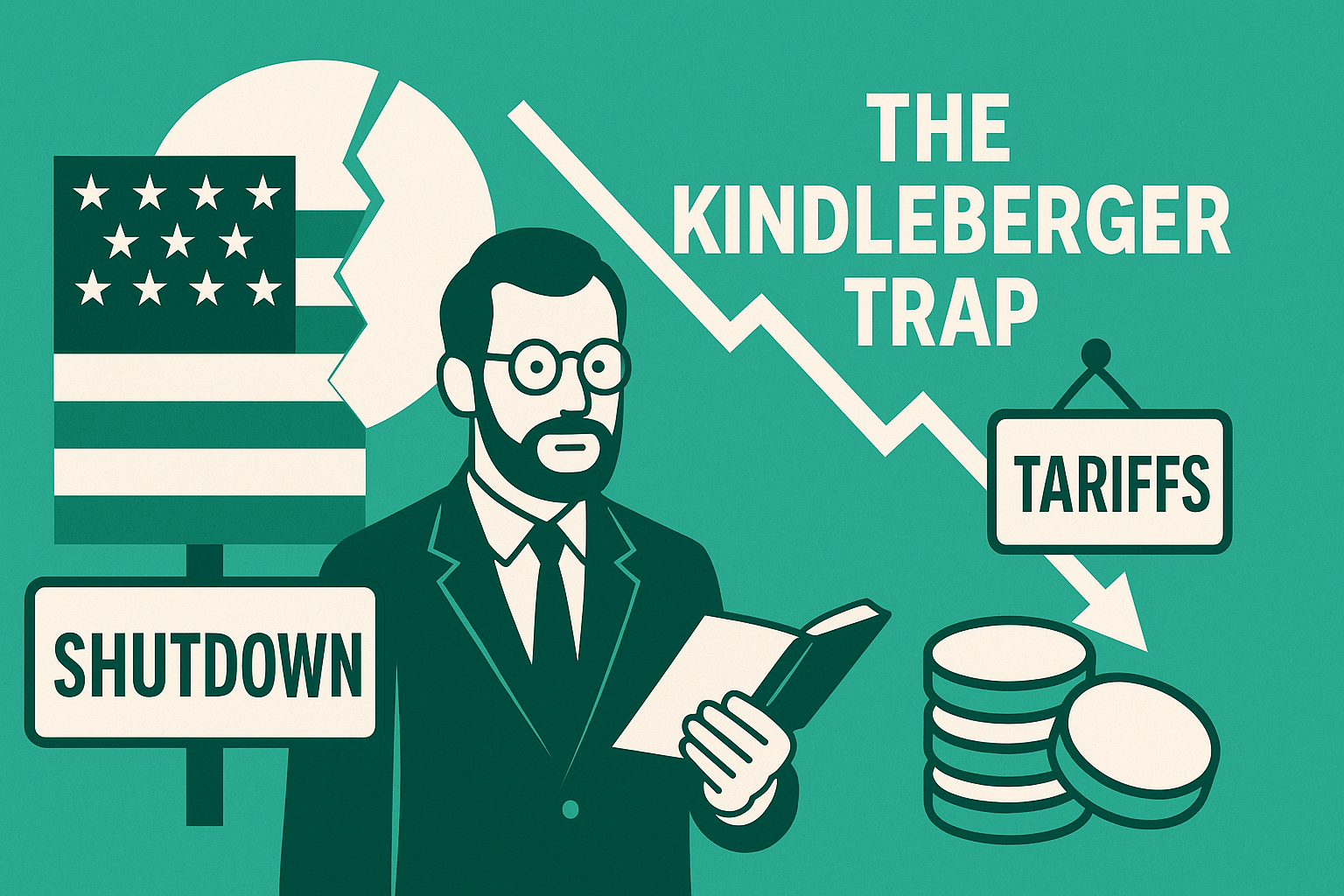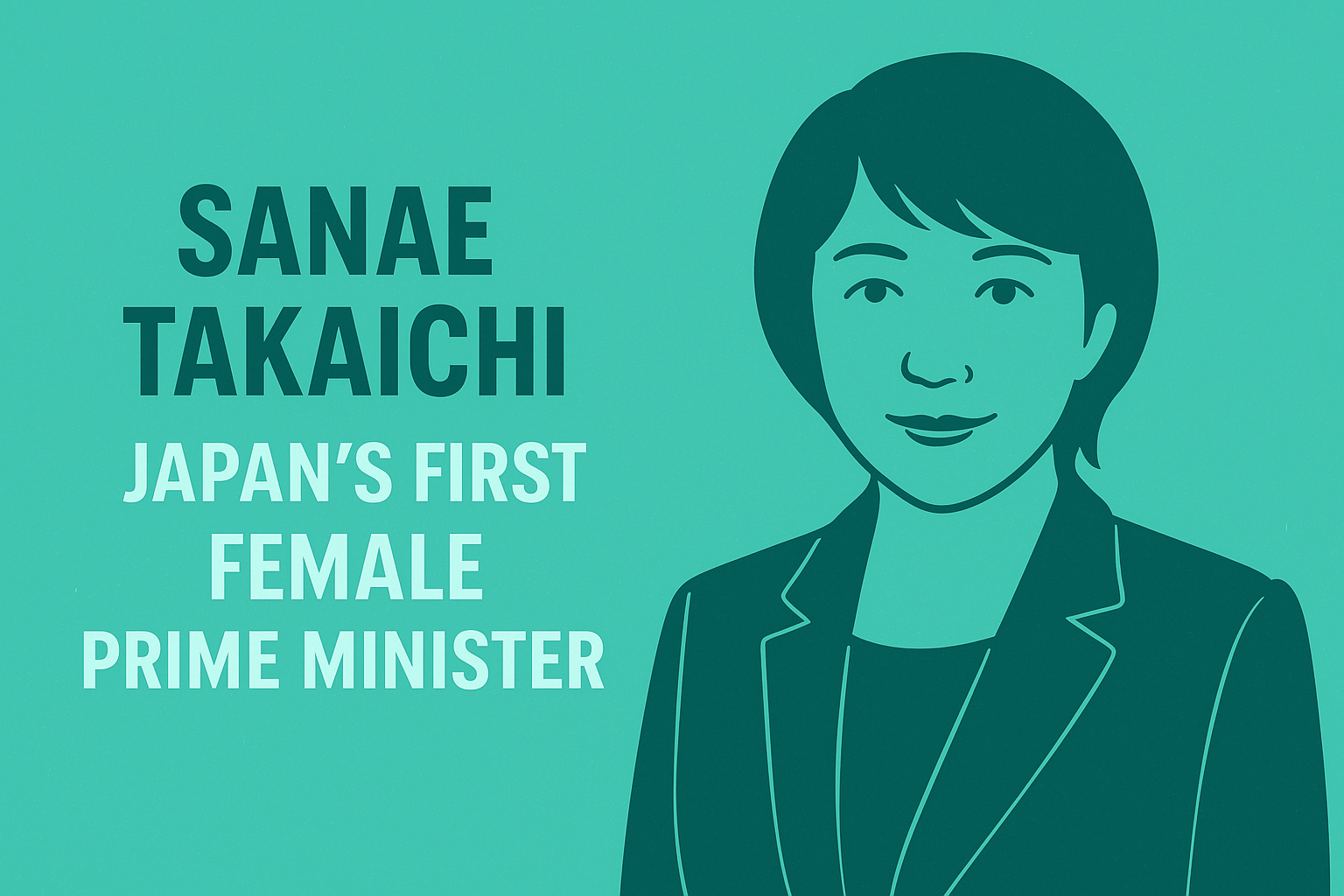Subtitle: Strategic Responses for Japan and the EU
1. A World Shaken by U.S. Domestic Crisis
The current turmoil in Washington is more than an American problem—it is a global shock. The U.S. government shutdown, the weaponization of tariffs, and mounting political pressure on the Federal Reserve expose deep cracks in the very system that once anchored the international order. What economist Charles Kindleberger warned decades ago—the “trap of hegemonic absence”—is no longer theory but reality. The world economy now resembles an apartment building without a landlord, where a small fire in one unit can quickly engulf the entire structure.
2. America’s Abdication of Hegemonic Duties
- Government Shutdown: The suspension of federal functions undermines trust in U.S. Treasuries and the dollar as a “risk-free” asset.
- Tariff Overreach: Auto tariffs of 25–35% and pharmaceutical tariffs of up to 200%—enacted unilaterally—undermine the principles of free trade.
- Financial Interference: Political pressure on the Federal Reserve threatens central bank independence, further weakening global confidence.
The U.S. is retreating from the three pillars of hegemony: free trade, international financial stability, and crisis leadership.
3. Global Ripple Effects
- Allies’ Vulnerability: Japan and the EU, highly dependent on U.S. markets, face direct shocks from tariff hikes and financial volatility.
- Emerging Markets’ Fragility: A weaker dollar’s credibility fuels capital flight, currency depreciation, and debt crises across developing economies.
- China’s Ambition and Limits: Through Belt and Road and renminbi settlements, China seeks to fill the vacuum. Yet lack of transparency and rising debt concerns prevent it from becoming a trusted hegemon.
4. Historical Warnings
- 1930s: U.S. isolationism prolonged the Great Depression.
- 1970s: The Nixon shock and oil crises destabilized the dollar system.
- 2020s: America’s internal dysfunction now signals another retreat from global responsibility, paving the way for instability.
5. Policy Recommendations for Japan and the EU
(1) Strengthen Multilateral Trade Frameworks
- Deepen TPP11 and the Japan–EU Economic Partnership Agreement as “U.S.-free free-trade anchors.”
- Take leadership in WTO reform, restoring transparency and dispute settlement functions.
(2) Diversify Financial and Currency Risks
- Shift foreign reserves away from over-reliance on the dollar toward euros, yen, gold, and digital currencies.
- Reinforce regional “lender of last resort” functions through institutions like the European Investment Bank (EIB), Development Bank of Japan (DBJ), and JBIC.
(3) Build Crisis-Response Mechanisms
- Establish a permanent G7+ (with India, Australia, others) emergency coordination mechanism.
- Expand IMF and ADB resources to prepare for emerging-market capital flight.
(4) Enhance Economic Security
- Secure supply chains for strategic goods such as semiconductors, pharmaceuticals, and energy.
- Promote yen and euro usage in international settlements to hedge against “de-dollarization” risks.
6. Conclusion: A Strategy for the Age of Leaderless Order
If the U.S. abdicates its hegemonic role, Japan and the EU must evolve into co-architects of global stability.
- Advancing multilateral free trade,
- Fortifying financial safety nets,
- Strengthening economic security,
are the only viable strategies to avoid falling into the Kindleberger Trap. The international order will not collapse overnight, but without deliberate action by secondary powers, the world will drift toward disorder.
In short, the era of relying on a single hegemon has ended. Japan and the EU must prepare to lead—not by replacing America, but by stabilizing the void it leaves behind.


